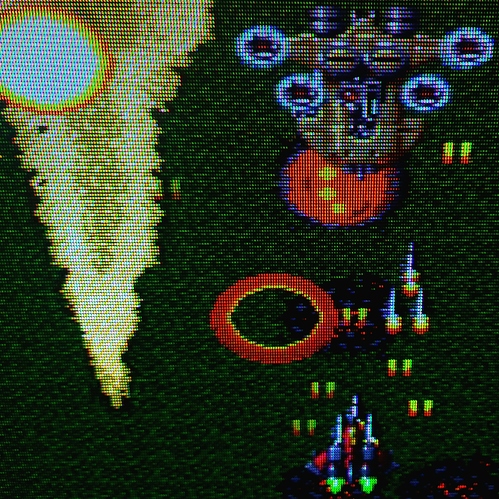You are right, the Retroarch HDR settings have no impact when the shader is active. I don’t have lilium’s reshade shaders installed, only the Megatron ones.
I could also measure the Megatron reshade port with the AutoHDR plugin from MajorPainTheCactus again on a different emulator to see if the colors will me tonemapped differently outside of RetroArch.
But it will be complex, because I noticed too, that all Presets of the Megatron shader act differently in regards to colors too. I hope that MajorPainTheCactus (I will call him shortly MPTC in future, because to write his name everytime is pain enough  ) will also have a look why the whitepoint and green primary are off the targets.
) will also have a look why the whitepoint and green primary are off the targets.
And it would be very nice, if he could implement the same looking Slot Mask from the Virtua Fighter RetroArch preset into reshade too, because it looks very nice and I couldn’t get such a good result with the reshade presets (the VF preset isn’t available via reshade). The Megatron masks within Retroarch look pretty different in each preset, which makes the whole thing very complex to be honest and also as I wrote before do the colors look different in each preset, which makes it mandatory to test every preset and setting independently.











 Ok so I went back doing some side by side experiments with my PAL Sony 2730QM PVM and MiSTer (not original console) and my PC plugged into my Samsung S95B QD-OLED and having put everything to neutral and using PAL I get a pretty accurate colour match eyeballing it whereas before Ive never achieved this. With yours
Ok so I went back doing some side by side experiments with my PAL Sony 2730QM PVM and MiSTer (not original console) and my PC plugged into my Samsung S95B QD-OLED and having put everything to neutral and using PAL I get a pretty accurate colour match eyeballing it whereas before Ive never achieved this. With yours